By Sean Fagan
.
.
.
“When the tide is out the table is set”
Tlingit saying
.
"Most seashores offer abundant sources of food and excellent prospects of survival"
John 'Lofty' Wiseman
.
.
How to Identify, Collect & Cook
Limpets, Periwinkles, Mussels & Dog Whelks
.
A key bushcraft skill is sourcing wild food. One of the most dependable habitats for acquiring wild food are seashores. Many edible species of shellfish, seaweeds, sea birds, marine mammals, fish and seashore plants abound on seashores.
Of all the seashore habitats, one of the most productive in terms of wild food, are rocky shores. This is partly because of the many mollusc species that inhabit rocky shorelines.
.
.
Shellfish Middens
.
“A shell midden was created by and large for one purpose: dinner.”
K. Kris Hirst, Archaeology Expert
.
Marine molluscs have been a dietary favourite of humans since prehistoric times and for good reason - rich in omega-3 fatty acids and protein - marine molluscs are an abundant, easily obtainable source of wild food that is available all year round.
If you look at a good topographical map with a decent representation of archaeological sites you will find a lot of ‘midden’ sites located along shorelines. The word midden means refuse heap.
The shoreline middens are usually the discarded, shellfish remains of prehistoric human feeding sites. Since the hard, dense material of shells can degrade extremely slowly they are one of the few organic materials that show up in prehistoric midden sites time and time again.
Ancient shell middens show how important shellfish, in particular marine molluscs, were for prehistoric people as most coastal middens are often composed of hundreds, often thousands (occasionally millions) of mollusc shells and little else.
Many shell middens were occupied over many generations. One of the ancient shell middens of Namu, British Columbia is, incredibly, over 9 metres deep and spans over 10,000 years of continuous occupation by indigenous people of that area.
.

Massive, Aboriginal shellfish midden at Weipi, Austrailia (Photo: Wikimedia Commons).
.
It's inspiring to think of our very first ancestors sitting on a beach many thousands of years ago, enjoying a delicious meal of periwinkles, mussels, limpets and cockles - most likely accompanied with fish – and possibly garnished with the strong flavours of seashore plants such as sea-kale or sea-rocket.
As students of bushcraft we can avail of the many molluscs that inhabit the rocky shores of our islands and in some way we can connect, at least vicariously, with our ancestors. Just as importantly we can avail of an abundant, tasty and healthy wild food.
.
HOW TO IDENTIFY, COLLECT & COOK
PERIWINKLES, LIMPETS, DOG WHELKS & MUSSELS
.
- COMMON PERIWINKLE Littorina littorea (Family: Littorinoidea)
Alternative names: Winkle, European winkle
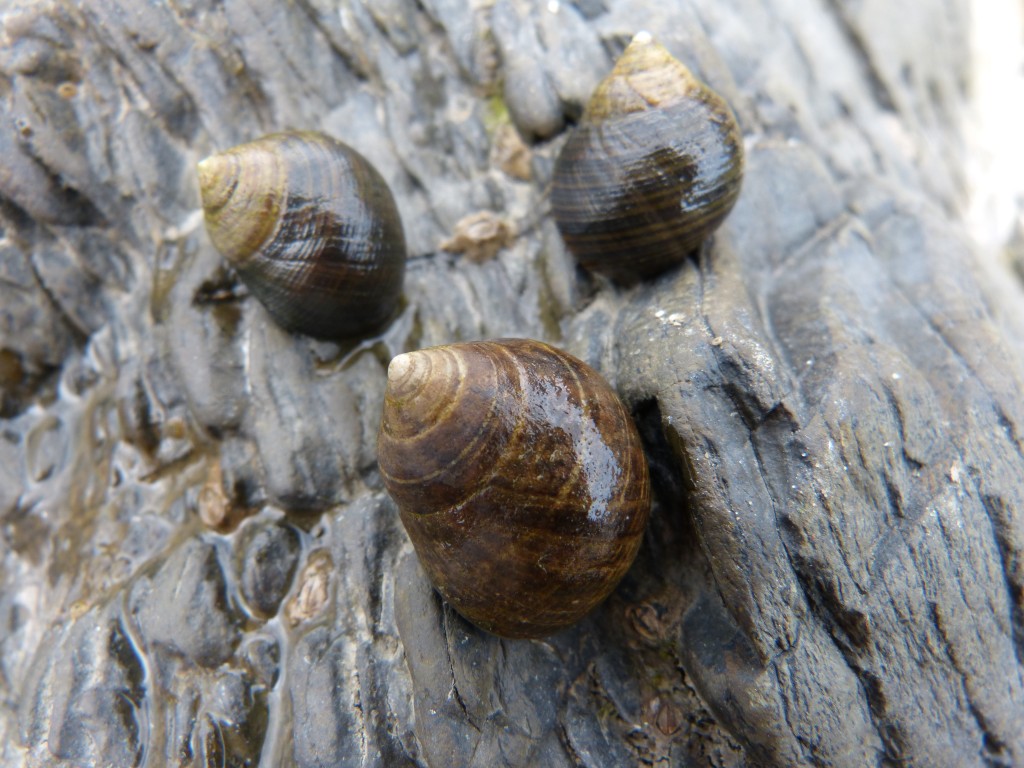
Periwinkles. Note the round/oval snail-like shape, and the thin, pale lines that run throughout the shell - Balbriggan Beach, Ireland (Photo: Sean Fagan).
.
Humans have a long culinary history with this small, unassuming mollusc across its broad, geographical range. Traditionally, periwinkles were sold in Ireland and Scotland in paper bags accompanied with a pin – the pin was used to ‘winkle out’ the soft body from its shell.
Periwinkles are generally common on rocky shores, occasionally forming dense aggregations in rock pools. They are also surprisingly long lived (5-10 years), reaching sexual maturity when only 1cm in diameter.
Found mostly on the mid to upper rocky shore, periwinkles mostly feed upon algae which coats large areas of rock.
Identification:
Periwinkles are essentially a small, marine snail with a dark, banded shell. Shell colour is variable but usually dark-coloured – with grey, grey-brown and black being the most common colours. Usually, the shell ends in a sharp point except when eroded (by wave action). A key feature of the periwinkle is the oval lip at the shell entrance, which usually has a prominent, pale patch.
.
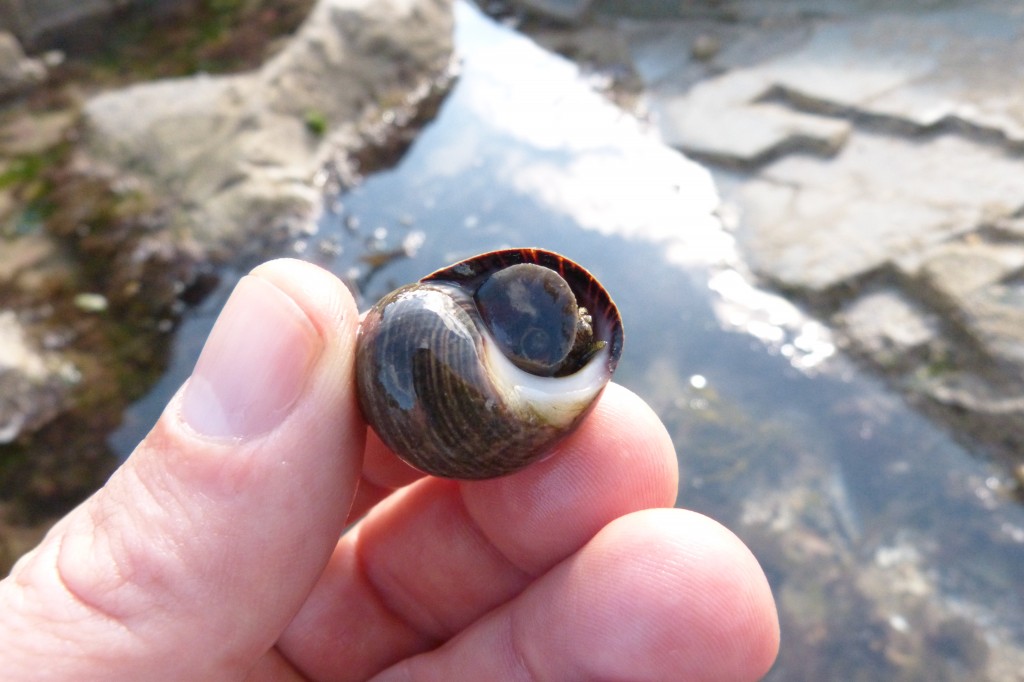
The distinctive oval-shaped opening of the periwinkle shell. Note the presence of pale patch on shell lip (Photo: Sean Fagan)
.
Collecting periwinkles:
Collecting periwinkles is usually a simple affair, provided you can correctly identify them. A word of caution though – rocky shores can be slippery underfoot, especially after rain or shortly after the receding of the tide. Make sure to wear sturdy, gripping footwear. Using a study walking stick or trekking pole (preferably with a rubber tip) for extra balance is also a good idea.
Please note, at the end of this article is information on how to cook periwinkles, limpets, mussels and dog whelks.
.
2. COMMON LIMPET Patella vulgata (Family: Patellidae)
Alternative names: Common European Limpet
.
Identification:
Limpets live inside a greyish-white, sometimes ashen, conical shell. Beneath the shell, the muscular foot, on which the limpet moves around, is usually a distinctive yellow, orange or green colour.
.
Limpets, despite their small size are incredibly tenacious. They are able to clamp down onto rock with great suction power - certainly strong enough to avoid being pulled off by hand - even by the hands of the most determined, burly forager.
Limpet flesh has a salty flavour with a chewy texture. I find them deliciously rubbery. They are also filling. Give me a dozen roasted limpets by the sea over a tame sandwich any day.
Collecting limpets:
The key to collecting limpets is surprise attack. To knock a limpet off its secure perch, you will need a good-sized rock that fits comfortably in your hand. With a swift, relaxed swing of the rock, hit the limpet sideways off its rocky perch. Be careful though, if you do not knock off the limpet with the first blow the limpet will clamp down a lot harder, and are much harder to knock off the second time around (best to leave that limpet alone as further blows will only crack or shatter the shell).
.
.
3. DOG WHELK Nucella lapillus (Family: Muricidae)
Alternative names: Atlantic dog whelk, whelk.
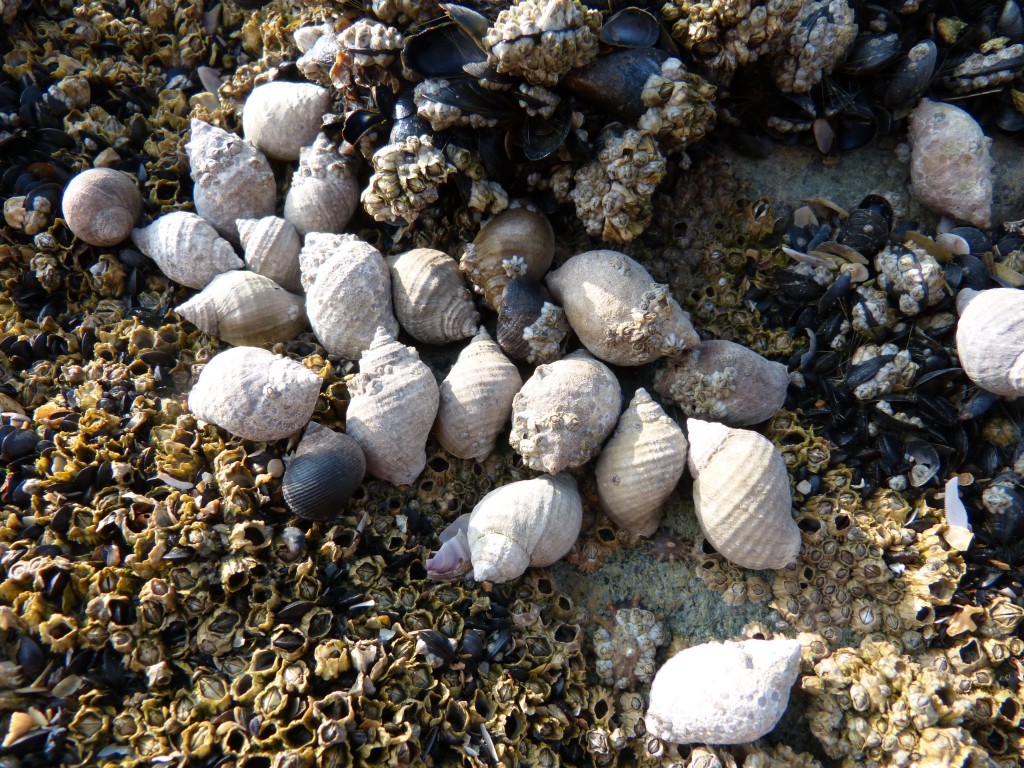
aA cluster of pale, dog whelks sheltering together at low tide among some periwinkles, mussels nad barnacles (photo: Sean Fagan)
.
An often overlooked mollusc and commonly mistaken for periwinkles, the dog whelk is usually abundant from mid to low shore on rocky coasts. Despite its small, snail-like appearance, the dog whelk is a prolific predator of barnacles, mussels and other hard-shelled molluscs.
The dog whelk employs a two pronged attack to overcoming its prey. It's muscular foot injects a shell-softening chemical which primes the shell of it's prey for the entry of the dog whelk’s primary killing tool – it's tongue. Armed with hard, sharp teeth – the whelk tongue can bore through the shell of its hapless victim to get to the soft innards. Gruesome stuff.
Identification:
Somewhat similar in size to the periwinkle, the shell of the dog whelk has a higher spire-like shape and is of a paler colour than the periwinkle. However, the key differentiating feature is the presence of a little groove in the opening of the shell. This groove (siphonal groove) is where the long whelk tongue (radula) emerges to bore into its prey. This groove at the shell opening is a key characteristic of dog whelks.
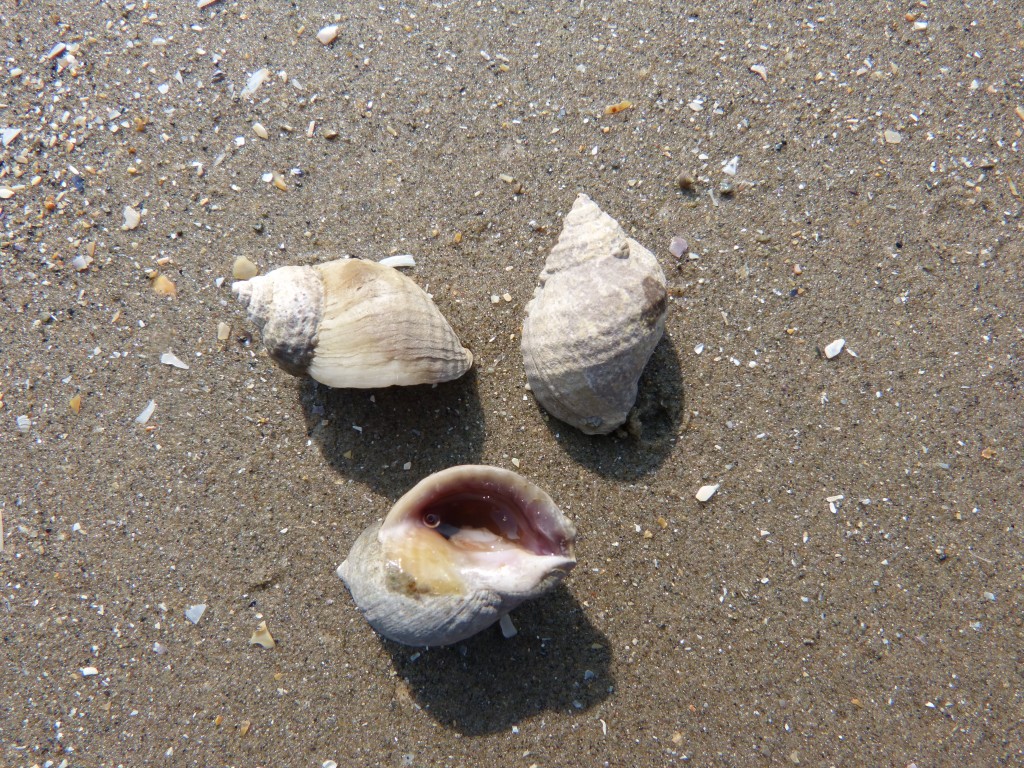
(Above) dog whelks. Note pale shell colour and spire-pointed shells. Also note small groove in shell opening of whelk at bottom of photo (photo: Sean Fagan)
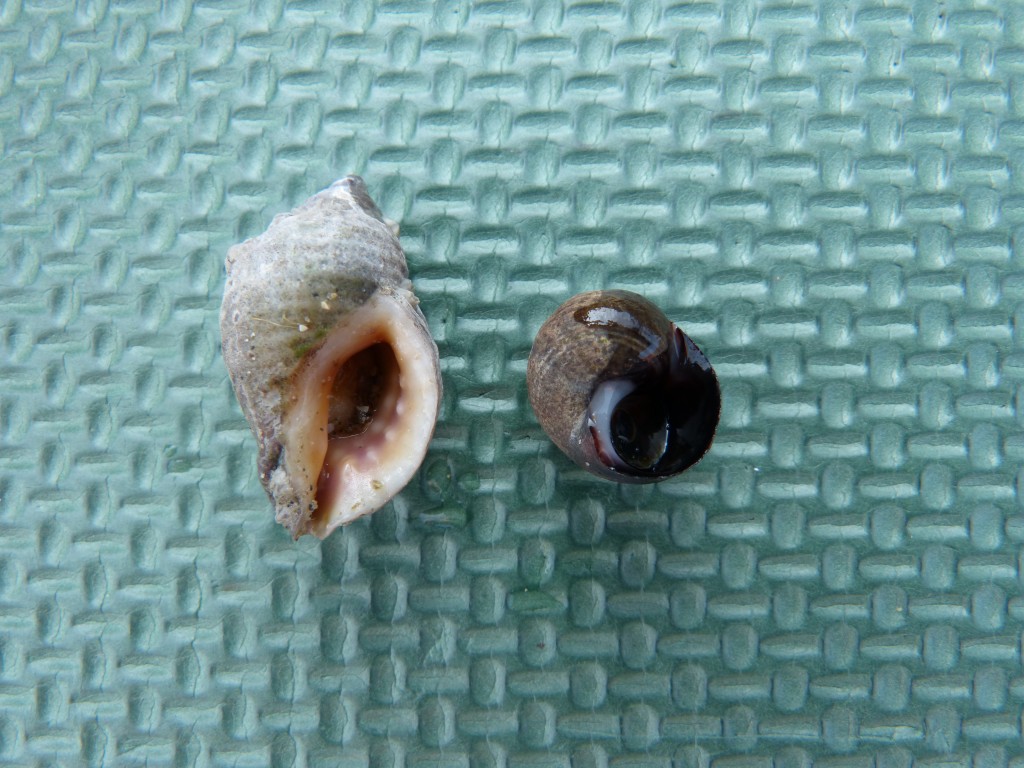
The siphonal groove of whelk (left) is conspicuously absent in the periwinkle (right). The overall shape, size and colours of both mollusc species is also markedly different.
.
.
4. MUSSEL Mytillis edilius (Family: Mytilidae)
Alternative names: blue mussel, common mussel.
Mussels are bivalve molluscs which attach themselves to rock with the aid of very strong thread (byssal thread). A bivalve is a mollusc that is composed of two equal-sized shells that attach together by means of a single hinge.
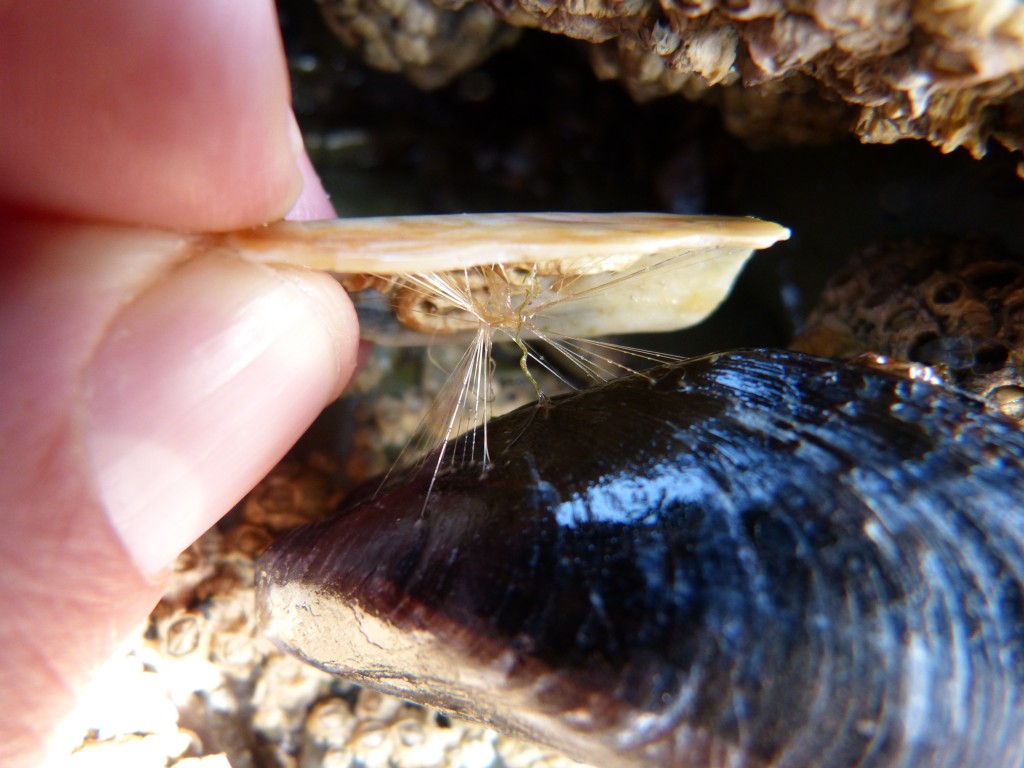
Mussel byssal threads (besides aiding attachment to rock, mussels also secrete byssal threads in order to immobilise, encroaching starfish, which prey on mussels (Photo: Sean Fagan).
.
IDENTIFYING MUSSELS:
Mussels are easy to recognise – the smooth, elongated, kidney-shaped shells are brown, black, purple or a dark blue colour. Mussels usually form dense congregations on rock.
COLLECTING MUSSELS
Mussels are firmly attached. It is possible to remove them by hand by twisting the shell until the attachment threads snap apart. An easier way is to cut the threads with a knife. If you are using a knife, there is a small risk of blunting the knife against rock or shell as you cut the mussels free.
.
ARE MARINE MOLLUSCS SAFE TO EAT?
.
Marine molluscs can be divided into two broad categories according to how they feed - filter feeders or grazers.
This is an important distinction as grazers are generally safer to consume than filter feeders.
Filter feeders allow tidal seawater to pass through their partially opened shells in order to sieve out microscopic organisms (plankton) for consumption (one mussel can filter 5 litres of seawater in one hour!).
If the seawater is polluted, then filter feeders (which pass a lot of seawater through their bodies in a given time period) are much more prone to storing pollutants than grazers, which feed upon small quantities of algae or seaweed on rock and usually have far less contact with sea-borne pollutants.
Roasting and boiling are two good cooking methods, which not only tenderise the tough flesh of molluscs but also provides effective sterilisation.
However, there is one important exception. Marine molluscs can be unsafe to consume during the warmer months of the year due to the possible presence of certain, toxic algae species, which can be immune to food sterilisation methods such as boiling and roasting. Sometimes, during the warmer months of the year, these toxic algae can “bloom” – and occur as a vast, red, orange or brown swathe on the sea surface (sometimes so large, that blooms can be seen by satellite).
The best advice, during summer, is to not eat any molluscs during the warmer months of the year – but if you do want to eat molluscs during the warmer months then consuming grazing molluscs such as periwinkles, whelks and limpets are your best bet.
Save the mussels and other filter feeders such as cockles and razor clams for the colder months of winter, when toxic algae species are at their lowest population density and present minimal risk.
However, even grazers an be prone to toxic algae contaimination. As a precaution, you can refer to maritime forecasts that include algal blooms as part of their forecasts, so as to avoid collecting molluscs during high risk times of the year.
In addition, and for obvious reasons, its best to avoid collecting molluscs near sewage outlets and industrial/agricultural waste outlets. Rocky shores of protruding coastlines, like peninsulas, tend to not collect as much run-off pollution from land.
.
COOKING MOLLUSCS
.
BOILING:
Put your molluscs into a pot of clear water and bring to a rolling boil for at least 5 minutes.
Take the pot off the boil and allow the pot to stand (with the lid on) for at least 5-10 minutes to ensure complete sterilisation.
It's best to boil the molluscs in water that is as clear as possible and to remove the shell and innards from the molluscs so that only the muscular parts of the molluscs are boiled, and consumed. If the water is murky or you choose to boil the molluscs in their shells then allow a rolling boil of 5 minutes, followed by a 5-10 minute simmering - then remove the pot from its heat source and allow to stand for 5-10 minutes (with the lid on).
.
ROASTING:
Roasting is an equally effective method of sterilisation as boiling but has the added advantage of adding more flavour to your meal. Adding flavour to your meals, whenever possible, is a great way to boost moral when outdoors (especially when living outdoors for extended periods of time).
Roasting can be done by allowing the molluscs to attach onto a flat rock which is then placed onto the hot embers of a dying fire.
Limpets, periwinkles and dog whelks are especially suitable for this method of cooking as they naturally want to attach to the 'cooking' rock. Mussels can be more difficult to cook on a flat rock.
Make sure to choose a cooking rock that is not prone to shattering when exposed to heat. Avoid porous, flaky or submerged rocks. Seek rocks that are, if possible, dry and solid and when tapped together, sound solid. Granite, basalt or limestone rocks are good choices but not always available.
.
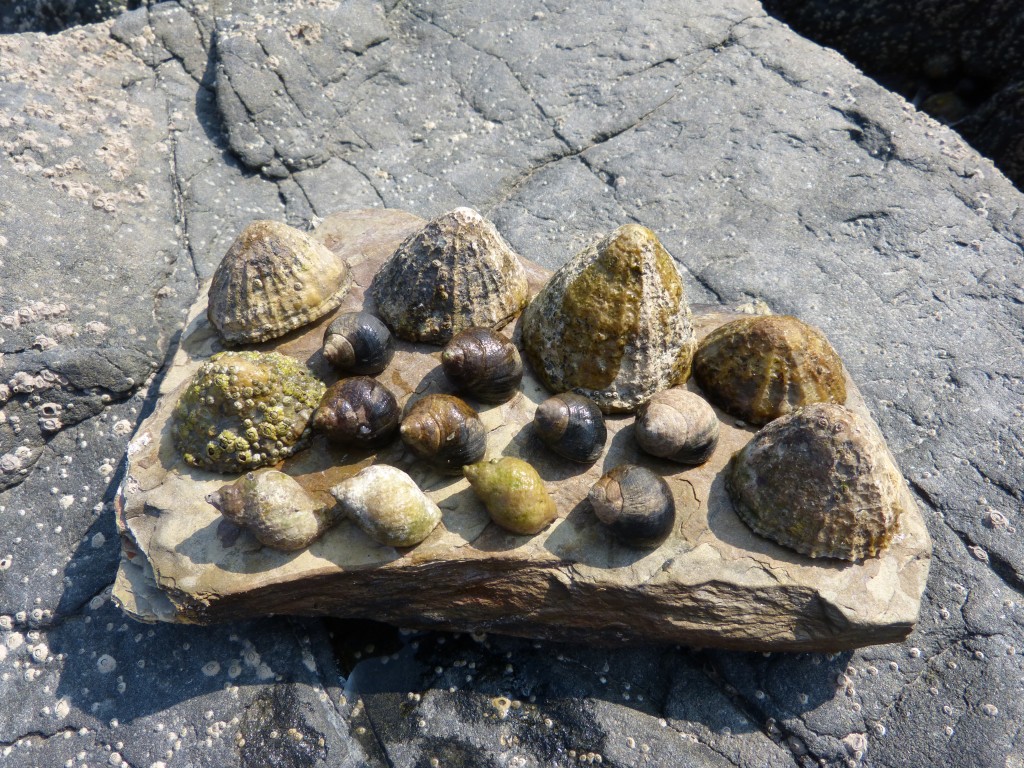
Limpets, dog-whelks and periwinkles on a flat 'cooking' rock - ready to be placed on a bed of hot embers (photo: Sean Fagan).
.
Sustainable Harvesting
Many marine molluscs are slow growing and have very limited reproductive success.
Limpets in particular are prone to local population collapses if over-harvested.
It’s best policy, if you are planning on repeatedly harvesting a site, to only harvest what you will actually consume and to allow your harvesting sites to rest for lengthy periods of the year to allow replenishment (the warmer months of the year from March to September is a good time to cease harvesting due to the pollution threat of algal blooms).
A tasty source of wild, sea-flavoured food that is well worth adding to your wild food palate - marine molluscs provide the budding and seasoned coastal forager an easily obtainable, nutritious meal that can greatly enhance your day by the sea.
In my opinion, very few experiences beats cooking wild food outdoors.
Sitting by the sea after a long day – the sun sinking towards the horizon, the hush of waves falling as my camp fire blazes away with the strong, heady aroma of cooked molluscs.
Priceless.
.
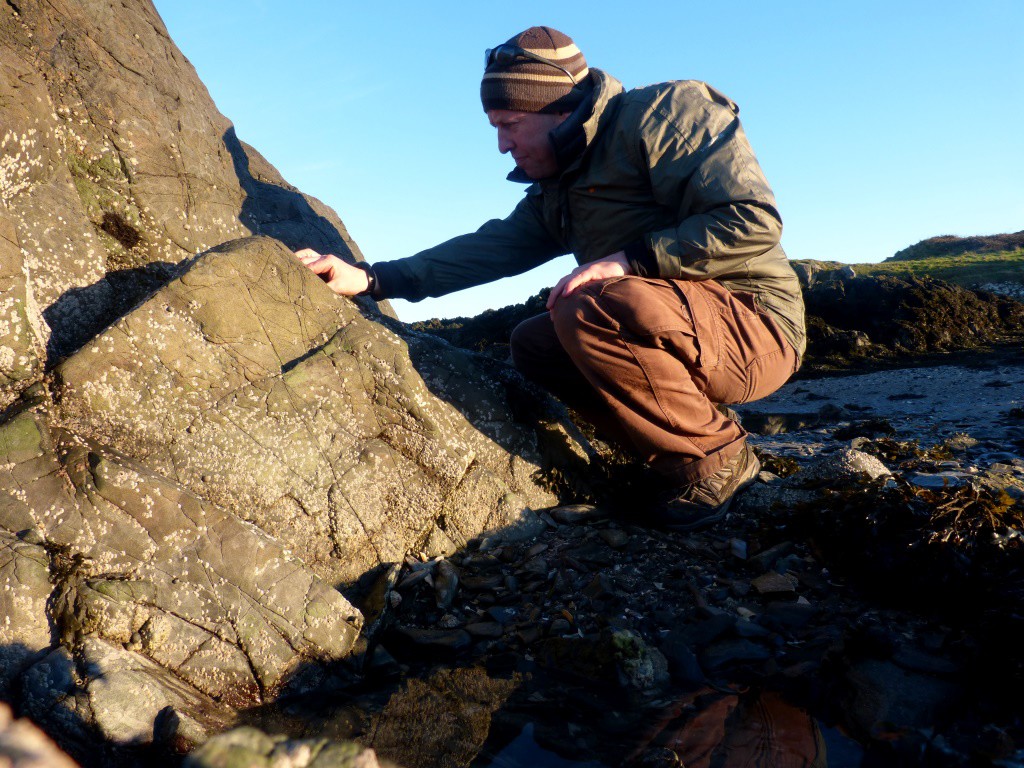
Don't forget - coastal foraging can be fun, even in winter. Here I am, picking dog whelks during a cold, sunny day in winter. I saw plenty of wildlife too, such as seals. Great day (Photo: Sean Fagan).
.
.
Related articles on this website:
.
*Check us out on Instagram, Twitter & Facebook for more outdoor-related topics..
.
IMPORTANT HEALTH & SAFETY INFORMATION
.
For more information about when molluscs are safe to eat, check out the following article: WHEN TO EAT SHELLFISH
The general consensus is that any month ending with R (i.e. September, October, November, December, Janurary and Feburary) are safe months in terms of shellfish consumption).
.Finally, an excellent article from the Canadian Food Inspection Authority about shellfish poisoning: SIGNS & SYMPTOMS OF SHELLFISH POISONING
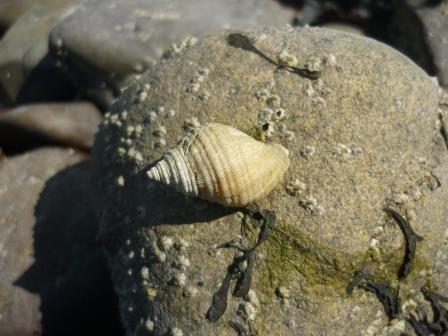
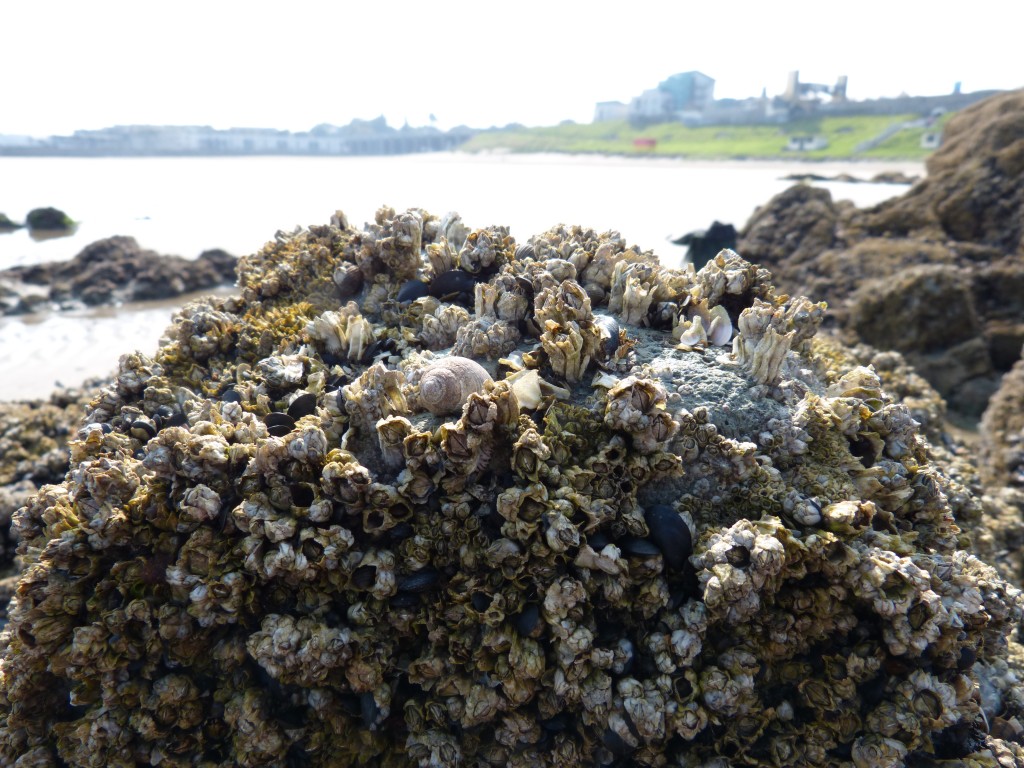
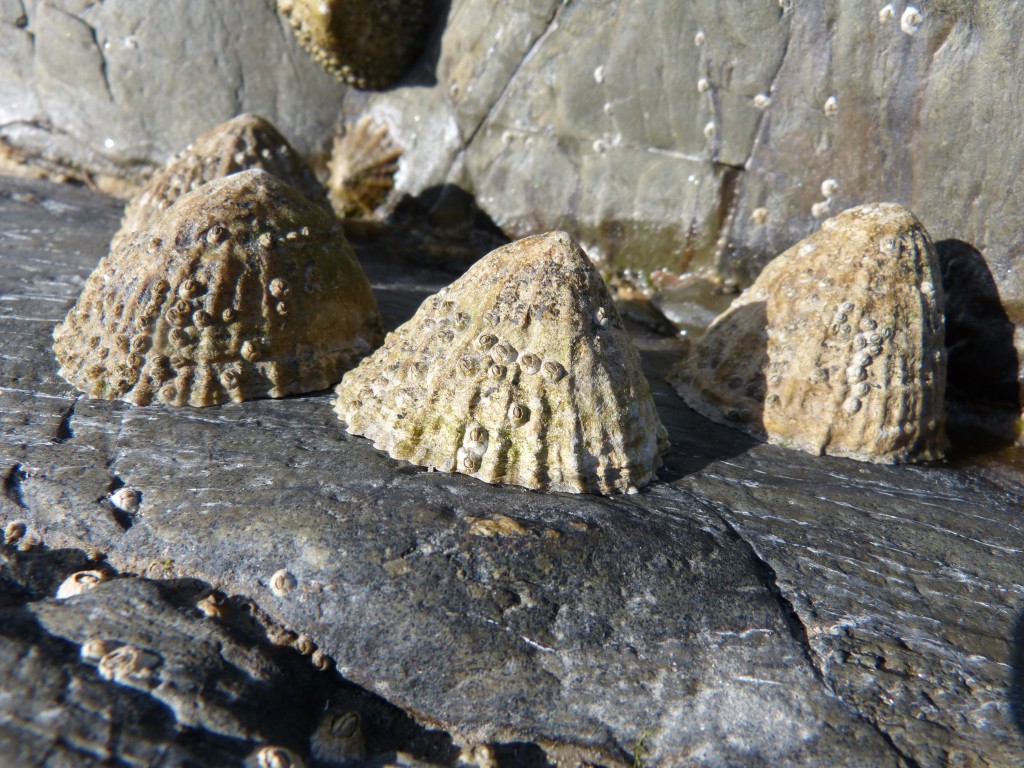
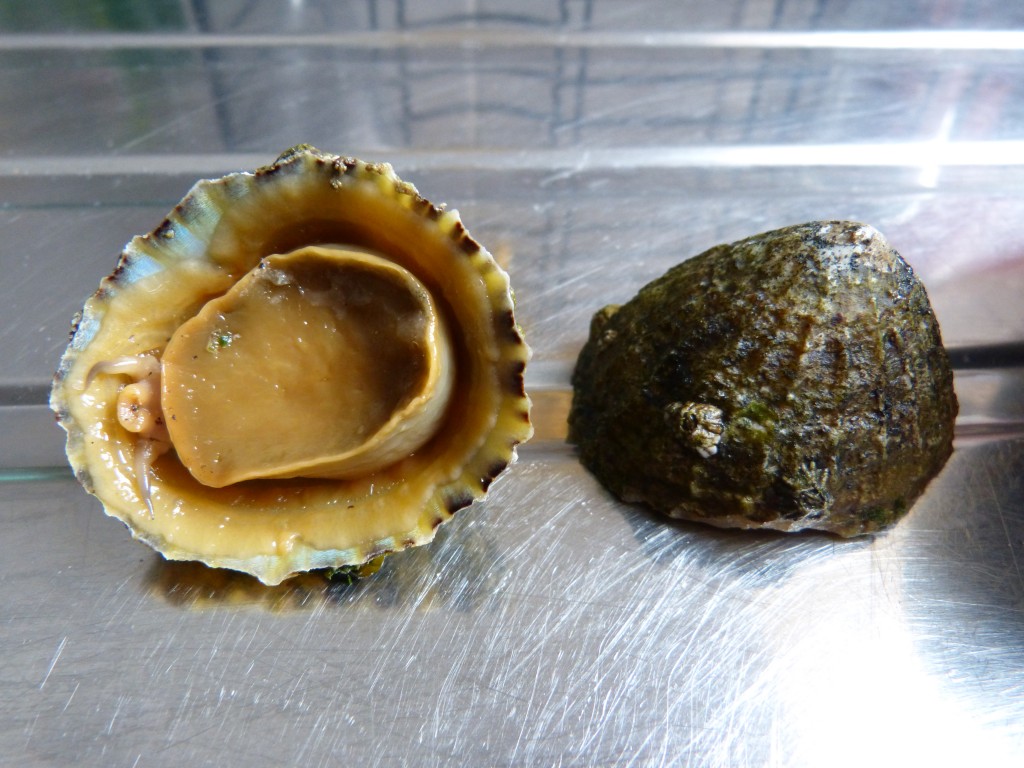
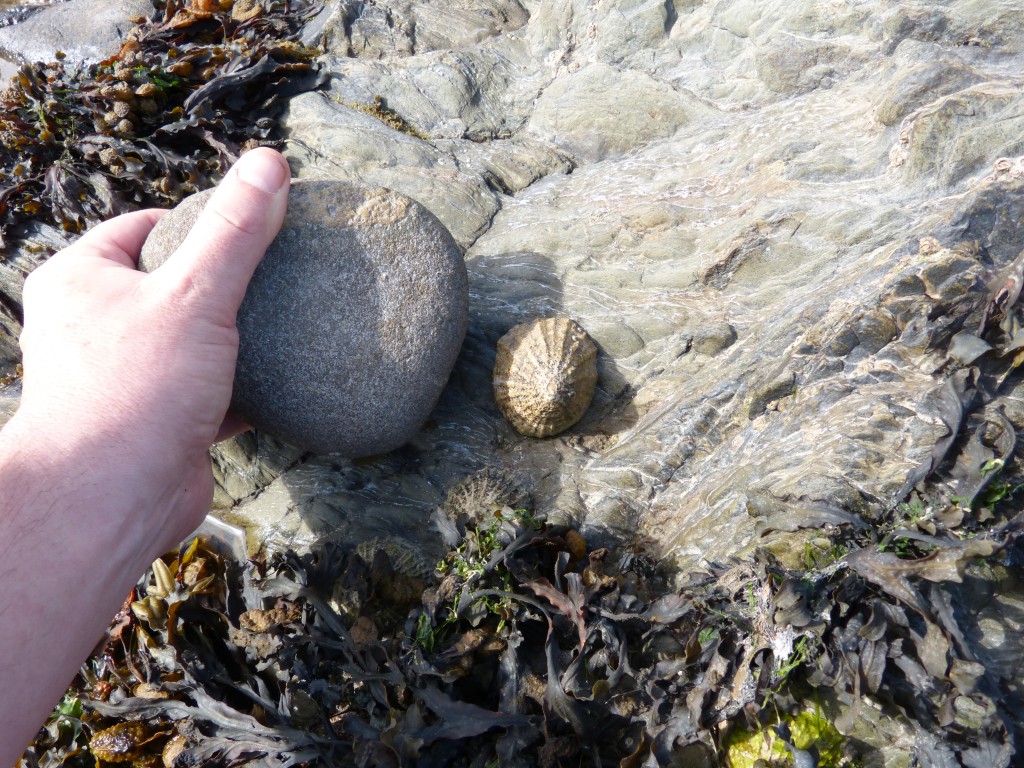
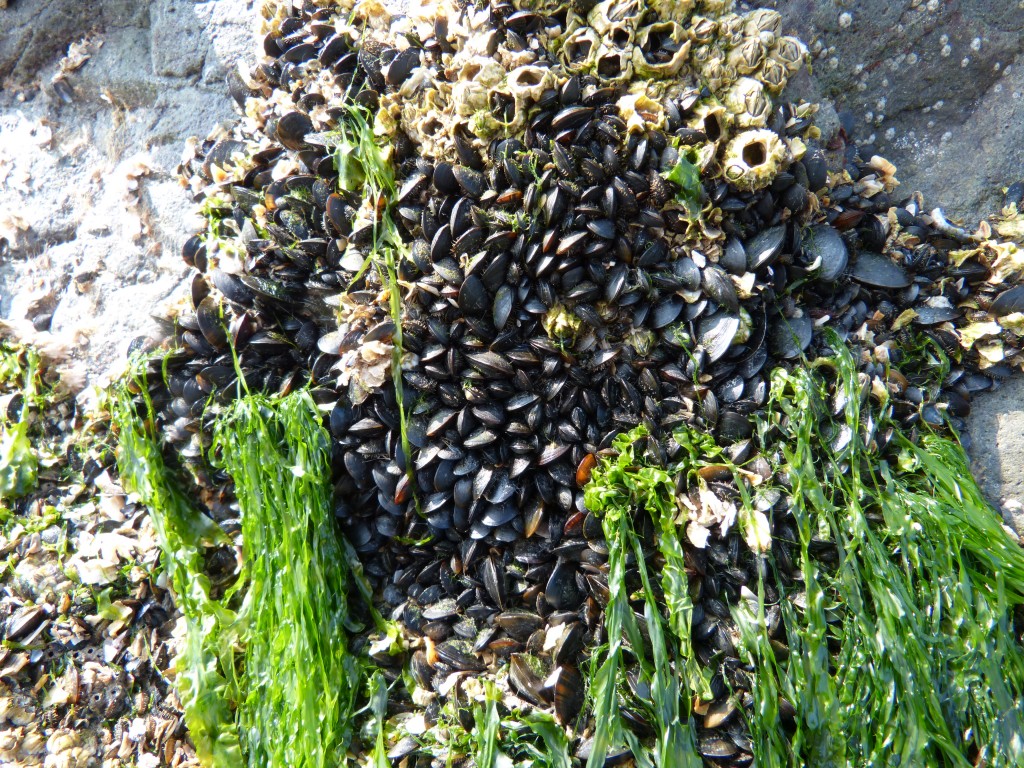
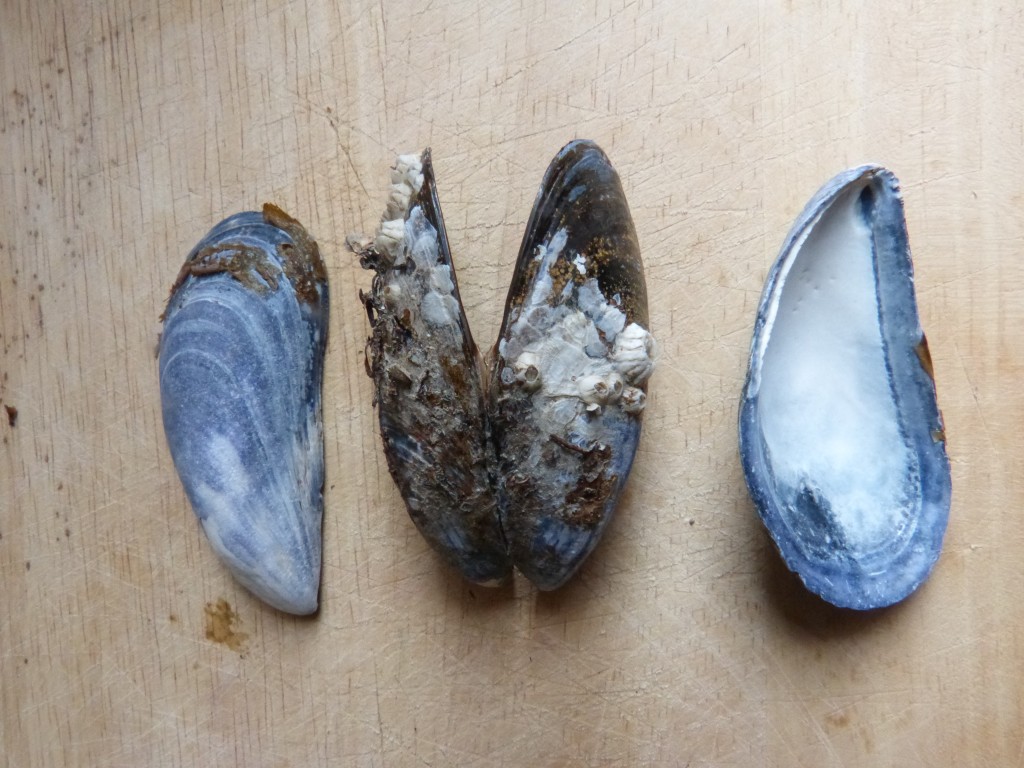

Recent Comments